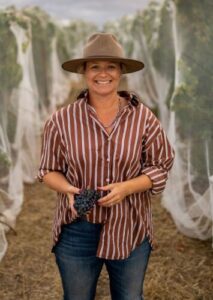19 March 2024
As reported in the AWRI eBulletin on 22 February, a number of vineyards across Australia have reported crown gall-like symptoms in vines in recent months. An industry response group has been convened to coordinate the response to this issue. The group includes representatives from AWRI, Australian Grape & Wine, Wine Australia, VINA, SAVIA, State Government Departments, Vinehealth Australia and diagnostic laboratories, and is developing eight project areas where work is needed to better understand and respond to this situation.
These project areas are:
- Data and information collection and analysis (led by AWRI)
- Communication to industry (led by AWRI)
- Pathogen identification (led by the University of Adelaide)
- Diagnostic protocols (led by the University of Adelaide)
- Identification of source (led by VINA, with support from AWRI)
- Nursery disinfestation procedures (lead organisation to be confirmed)
- Farm-gate hygiene procedures (lead organisation to be confirmed)
- Biological control (lead organisation to be confirmed)
Pathogen identification and diagnostic protocols
Although Agrobacterium has been implicated, the identity of the disease-causing agent is currently unclear. It may be an endemic pathogen, a new pathogen or a combination of pathogens across different locations. To address this, Dr Sharon Harvey from Wine Australia recently convened a meeting of representatives from a number of diagnostic laboratories and research organisations to review the progress made in identifying the causal agent and to coordinate a response to address any existing gaps. To support these goals, Assoc. Prof. Iain Searle from the University of Adelaide is leading the development of a project proposal for submission to Wine Australia. This project will aim to identify the pathogen responsible for the outbreak and develop essential diagnostic tools. It will be conducted in collaboration with organisations such as the AWRI, DPI NSW, QLD DAF, Affinity Labs, Crop Health Services of Agriculture Victoria, as well as DPIRD (WA) and Biosecurity Tasmania.
Diagnostic testing currently only has the capacity to identify potential pathogens. In light of this, growers are advised to hold off on submitting samples for testing until new diagnostic tools have been developed. This precautionary approach will ensure that testing provides growers with the most reliable information for decision-making.
Identification of cause of symptoms
The industry response group is actively collaborating with affected growers, the propagation sector and State Departments to thoroughly investigate potential sources and causes of the disease outbreak. Present findings suggest that the crown gall-like symptoms are isolated to a limited number of vineyards in Queensland, NSW and Victoria. At this stage, it remains unclear whether the disease outbreak originated from infected planting material, environmental influences, cultural practices, or a combination of these and/or unknown factors.
As part of these efforts, the propagation sector has already been conducting traceback activities to source blocks, testing grapevine material, and reaching out to customers. In addition, the AWRI is maintaining a central database of symptom detection to aid in traceback activities, track diagnostic test results, understand disease progression and assist growers.
Once the pathogen is accurately identified and its origin more clearly understood, the industry response team will work to develop measures to limit the spread of the disease. The objective is to have these enacted before the onset of the propagation season in June 2024.
New fact sheet
An AWRI fact sheet on crown gall is now available. This fact sheet summarises the current knowledge on crown gall disease, classification of the associated Agrobacterium and Allorhizobium bacteria, symptoms, control measures and the current status of diagnostics.
Grower information form
A form for growers to record cases of gall-like symptoms is also now live, to support the collection of a comprehensive data set describing the extent of this problem across Australia. All growers who have observed gall-like symptoms are encouraged to report them using this form. Information provided may be shared with members of the industry working group but will not be revealed publicly or shared outside this group.
A reminder of what to do if you observe gall-like symptoms:
- Photograph and document the location of affected vines.
- Log the symptoms using the grower information form.
- For new vine plantings, contact your nursery supplier and the Vine Industry Nursery Association (VINA) on 0429 772 221 or steve@armnursery.com.au.
- Contact the AWRI helpdesk on 08 8313 6600 or helpdesk@awri.com.au for advice on next steps.
For more information about crown gall, the industry response group or any other technical viticulture or winemaking question, please contact the AWRI helpdesk on 08 8313 6600 or helpdesk@awri.com.au.
Acknowledgments
The AWRI’s eBulletin is supported by Wine Australia, with levies from Australia’s grapegrowers and winemakers and matching funds from the Australian Government. The AWRI is a member of the Wine Innovation Cluster in Adelaide, South Australia. Members of the crown gall industry response group are thanked for their contributions.



